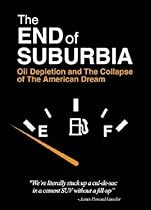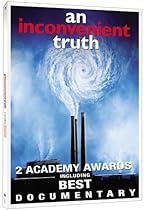Transit oriented developments allow you to live nearer necessary destinations and give you more transportation options. That means you'll spend less money on the growing cost of gasoline.
by Broderick Perkins
© 2008 DeadlineNews.Com
Unauthorized use of this story is a copyright violation -- a federal crime
Deadline Newsroom - You may have to move to get away from the high cost of gasoline.
Well, you really can't get away from the high cost, but a move could help you use less gas.
That is, if you move to a transit oriented development (TOD).
If your next home is in a TOD community, your housing choice could help defray the cost of gasoline by lowering demand and dependency on its use while easing the environmental impact of burning fossil fuels and sprawl.
With a gallon of gasoline above the $4 mark -- up more than a buck from a year ago nationwide -- a group of organizations say housing affordability isn't only a measure of what portion of your income you shell out for the mortgage and related costs, but also the cost of transportation to and from work, school, worship, shopping, medical care and the host of other destinations you regularly visit.
Simply put, the nearer you live to those destinations or the more transportation options available to you from your community, the more opportunities you'll have to spend less on petrol fueled transportation.
When the Center for Neighborhood Technology (CNT) and Surface Transportation Policy Project (STPP) last calculated the effects of gasoline costs on the household budget, gasoline was only $1.85 a gallon nationwide, and some communities were spending as much as 20 cents on every dollar for gasoline. Imagine what a more than doubling of gas prices has done to a household budget that hasn't has the benefit of higher incomes.
That makes TODs more viable than ever, primarily for the gasoline savings, but also for a host of other reasons.
• A well-conceived and developed TOD is designed to focus compact growth around transit stops to bring riders closer to transit facilities, to encourage walkable infill development, and save land. They can be built to contain many elements of the so-called "new urbanism" or "neo-traditionalist" developments named for a more traditional pedestrian-friendly, easy-access-to-essentials approach to development that has less impact on the infrastructure than sprawl.
• TODs are viable in both urban and suburban settings, provided development is not simply adjacent to transit, but shaped by transit in terms of parking, density, and building orientation.
• TODs provide mobility options, very much needed in the most congested metropolitan areas. This allows young people, the elderly, low-income people, people who prefer not to drive or own cars the ability to get around.
• TODs can lower annual household drive times by 20 percent to 40 percent for those living, working and/or shopping near transit stations. Reduced driving time means reduced driving expense to the tune of thousands of dollars a year. That can land a TOD home owner what's called a "Location Efficient Mortgage" or LEM where they are available.
Just as "Energy Efficient Mortgages (EEMs)" allow a home owner with a more energy-efficient home to spend more money on housing instead of energy, LEMs allow home owners to spend a greater percentage of their income on housing when they spend less on transportation.
• Reduced drive time also means reduced air pollution and energy consumption. TODs can reduce rates of greenhouse gas emissions by 2.5 to 3.7 tons per year for each household. Likewise, TODs typically consume less land than low-density, auto-oriented growth and it reduces the need to convert farmland and open spaces to development.
• Also, by creating active communities that are busy through the day and evening, TODs put more "eyes on the street" and that increases safety for pedestrians, transit-users, and others.
Championing the TOD cause, The Center for Transit-Oriented Development (TOD) is an initiative that includes input from a host of like-minded organizations including:
• Congress for the New Urbanism; Reconnecting America; Center for Neighborhood Technology; New Urbanism; Surface Transportation Policy Project; and the Urban Land Institute
Experts from some of those groups helped contribute to the documentary "End Of Suburbia" which reveals that the depletion of oil and the ensuing economic and social chaos are inevitable.
© 2008 DeadlineNews.Com
Get news that really hits home for your Web site or blog from DeadlineNews.Com.
Broderick Perkins, an award-winning consumer journalist of 30 years, is publisher and executive editor of San Jose, CA-based DeadlineNews Group -- DeadlineNews.Com, a real estate news and consulting service and Web site and the new Deadline Newsroom, DeadlineNews.Com's news back shop. In both cases, it's where all the news really hits home.
DeadlineNews.Com's Editorial Content Is Intellectual Property • Unauthorized Use Is A Federal Crime
Friday, July 25, 2008
Moving Away From Heavy Gasoline Use
From The
Deadline Newsroom
on
7/25/2008 09:00:00 AM
![]()
Labels: Broderick Perkins, climate change, Deadline Newsroom, DeadlineNews.Com, EEM, energy efficient mortgage, global warming, LEM, location efficient mortgage, TOD, transit oriented development
Subscribe to:
Post Comments (Atom)


No comments:
Post a Comment